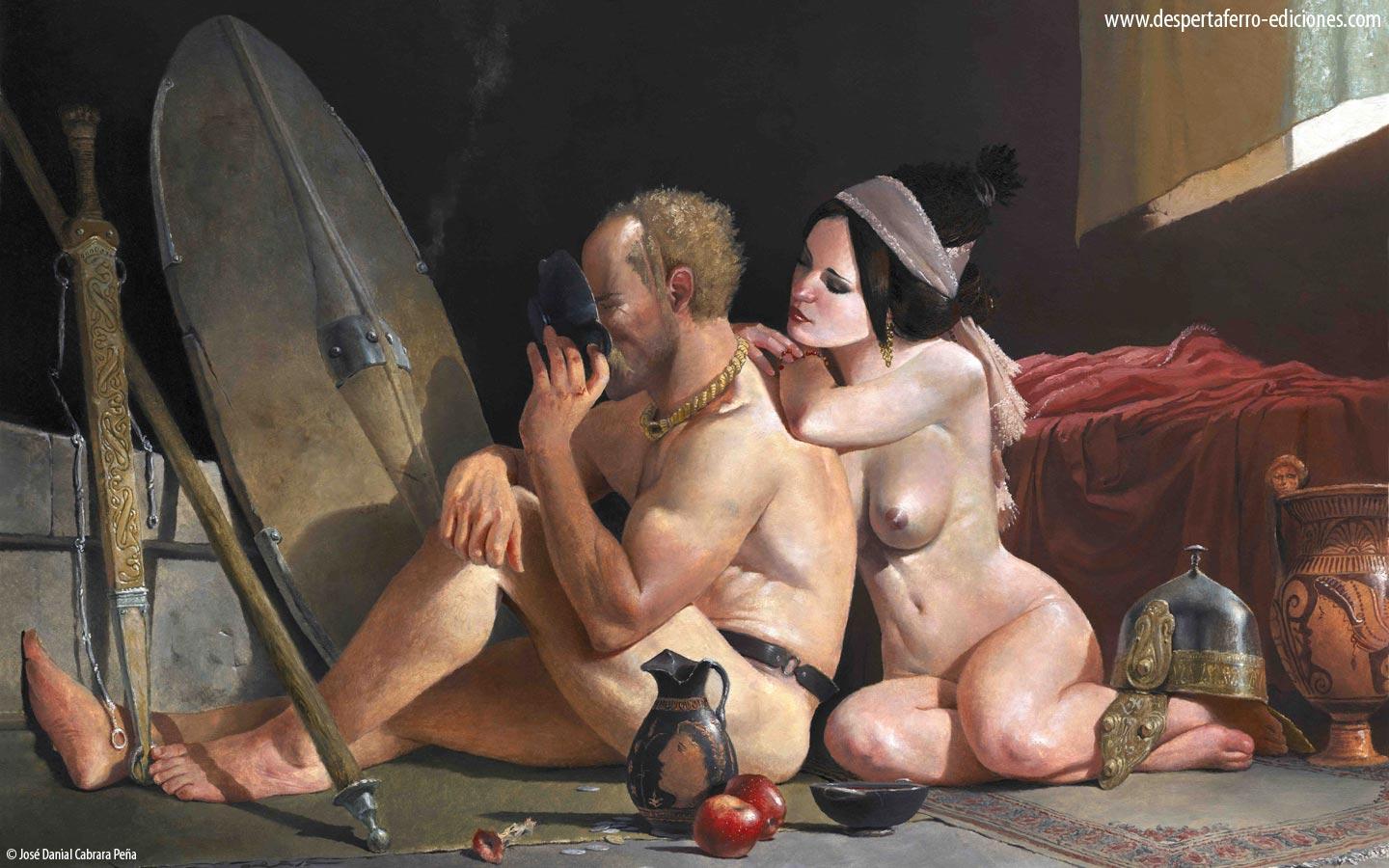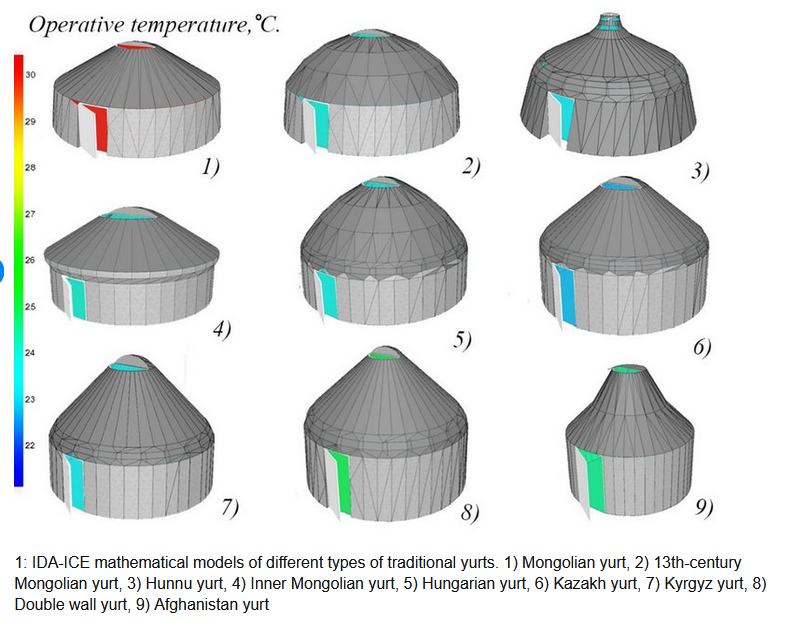-
Posts
2.379 -
Joined
-
Last visited
-
Days Won
80
Everything posted by Genava55
-
Vercingetorix died before reaching his 40s.
-
By the way, two of the pictures of tombs are from the 3rd century BC it seems
-
https://es.m.wikipedia.org/wiki/Césaro
-
https://twitter.com/XavierMT3/status/1667807403524648960 Kofun era terracottas.
-
.thumb.jpg.b21ca1d0c15fb56b42c39b25a0a40815.jpg)
Other strategy games not RTS.
Genava55 replied to Lion.Kanzen's topic in Introductions & Off-Topic Discussion
Official twitter of RTR: Rome Imperium Surrectum https://twitter.com/ris_rome Official facebook: https://www.facebook.com/rtr.imperium.surrectum -
.thumb.jpg.b21ca1d0c15fb56b42c39b25a0a40815.jpg)
Others RTS - Discuss / Analysis
Genava55 replied to Lion.Kanzen's topic in Introductions & Off-Topic Discussion
-
-
In French, but there are some useful info: - Yayoi have used extensively the sling. - Yayoi did used the shield and the bow. - Yayoi people were divided in small chiefdoms, often fighting against each other. - The horse was introduced lately and was not used for warfare until the 4th century AD.
-
A French channel about Japan's prehistory: https://www.youtube.com/channel/UC0gIjm7TayHTvESXm5riqMA
-
Refrain from such comments. This is a game in which you can kill and destroy other people, and the thing bothering you is seeing the belly of a woman?
-
I think that a Palaestra or a Gymnasion would be more suitable.
-
posted in the wrong topic
-
Cassius Dio, Roman History, Book 5, Chapter 62: "All this I [Boudicca] say, not with the purpose of inspiring you with a hatred of present conditions, — that hatred you already have, — nor with fear for the future, — that fear you already have, — but of commending you because you now of our own accord choose the requisite course of action, and of thanking you for so readily co-operating with me and with each other. 2 Have no fear whatever of the Romans; for they are superior to us neither in numbers nor in bravery. And here is the proof: they have protected themselves with helmets and breastplates and greaves and yet further provided themselves with palisades and walls and trenches to make sure of suffering no harm by an incursion of their enemies. For they are influenced by their fears when they adopt this kind of fighting in preference to the plan we follow of rough and ready action. 3 Indeed, we enjoy such a surplus of bravery, that we regard our tents as safer than their walls and our shields as affording greater protection than their whole suits of mail. As a consequence, we when victorious capture them, and when overpowered elude them; and if we ever choose to retreat anywhere, we conceal ourselves in swamps and mountains so inaccessible that we can be neither discovered or taken. 4 Our opponents, however, can neither pursue anybody, by reason of their heavy armour, nor yet flee; and if they ever do slip away from us, they take refuge in certain appointed spots, where they shut themselves up as in a trap. 5 But these are not the only respects in which they are vastly inferior to us: there is also the fact that they cannot bear up under hunger, thirst, cold, or heat, as we can. They require shade and covering, they require kneaded bread and wine and oil, and if any of these things fails them, they perish; for us, on the other hand, any grass or root serves as bread, the juice of any plant as oil, any water as wine, any tree as a house. 6 Furthermore, this region is familiar to us and is our ally, but to them it is unknown and hostile. As for the rivers, we swim them naked, whereas they do not across them easily even with boats. Let us, therefore, go against them trusting boldly to good fortune. Let us show them that they are hares and foxes trying to rule over dogs and wolves." https://romaninscriptionsofbritain.org/inscriptions/TabVindol164 "… the Britons are unprotected by armour (?). There are very many cavalry. The cavalry do not use swords nor do the wretched Britons mount in order to throw javelins." Found in Vindolanda, probably a Roman soldier describing the Caledonians.
-
Indeed, if the Romans don't have theatres in game, the Macedonians, Seleucids and Ptolemies should not. It should be limited to Athenians.
-
.thumb.jpg.b21ca1d0c15fb56b42c39b25a0a40815.jpg)
Archaeological potpourri
Genava55 replied to Gurken Khan's topic in Introductions & Off-Topic Discussion
I think that most of the coins are from the Qing dynasty, only a few from the Ming. But yeah the Yongle coins were used massively for foreign trades so it was mostly used by foreign merchants: https://en.wikipedia.org/wiki/Yongle_Tongbao -
.thumb.jpg.b21ca1d0c15fb56b42c39b25a0a40815.jpg)
Archaeological potpourri
Genava55 replied to Gurken Khan's topic in Introductions & Off-Topic Discussion
https://twitter.com/Yellowriver478/status/1666579698405740545 The coin armour of the North American natives, belonging to the Tlingit people of the Yukon. Most of the coins used is from the Qing dynasty, ranging from the Shunzhi to Xianfeng periods, while the earliest is from Yongle period (1403-1424) of the Ming... and those of the Kangxi and Qianlong emperors being the most popular. These copper coins may have been obtained from trade with Chinese or Russian merchants. The Tlingit had used such coin armour to make Russians' smoothbore muskets powerless. -
.thumb.jpg.b21ca1d0c15fb56b42c39b25a0a40815.jpg)
Archaeological potpourri
Genava55 replied to Gurken Khan's topic in Introductions & Off-Topic Discussion
https://twitter.com/HeraklesCithare/status/1666706504647319553 Heart of the sanctuary of Asklepios superbly illustrated by Massimiliano Pezzolini. Pilgrims went there hoping to find healing through the power of incubation, i.e. through dreams, but the sanctuary also attracted the best doctors in Greece. The marble tholos, erected in the middle of the 4th c. av. probably housed the serpents of Asklepios, healing animals of the god of medicine. The Doric temple includes an internal gallery with Corinthian capitals and a coffered dome. This was the heart of the sanctuary, which extended over a colossal surface and presented monuments as varied as they were numerous: Propylon, Katagogeion (hotel for pilgrims with 160 rooms), Hestiatorion (catering for pilgrims), gymnasium, stadium, theater ... But also baths, an altar to Apollo (the father of Asklépios), a temple to Aphrodite. -
.thumb.jpg.b21ca1d0c15fb56b42c39b25a0a40815.jpg)
Age of Empires 2 Definitive Edition
Genava55 replied to Lion.Kanzen's topic in Introductions & Off-Topic Discussion
-
.thumb.jpg.b21ca1d0c15fb56b42c39b25a0a40815.jpg)
Age of Empires 2 Definitive Edition
Genava55 replied to Lion.Kanzen's topic in Introductions & Off-Topic Discussion
-
.thumb.jpg.b21ca1d0c15fb56b42c39b25a0a40815.jpg)
New Civ for Alpha 28+ (extended discussion)
Genava55 replied to wowgetoffyourcellphone's topic in General Discussion
Proto-Germanic would be the best. Wikipedia: https://en.wiktionary.org/wiki/Category:English_terms_derived_from_Proto-Germanic https://en.wikipedia.org/wiki/List_of_Germanic_and_Latinate_equivalents_in_English https://en.wiktionary.org/wiki/Appendix:Proto-Germanic_Swadesh_list https://en.wiktionary.org/wiki/Category:Proto-Germanic_lemmas Others: https://lrc.la.utexas.edu/books/pgmc/1-introduction https://brill.com/display/title/8205 -
.thumb.jpg.b21ca1d0c15fb56b42c39b25a0a40815.jpg)
New Civ for Alpha 28+ (extended discussion)
Genava55 replied to wowgetoffyourcellphone's topic in General Discussion
Obviously, it is easier to portray the nomads with the same mechanics than the other civs. I think being innovative here is an overshoot. Suebians are better. Cimbri are less interesting and less known. If we say that Suebians are related to the Jastorf culture, then they are already appearing around 600 BC in Mecklenburg-Vorpommern. But now they have some proto-buildings. People couldn't picture the civ. -
Just to give inspiration to distinguish between Scythians and Xiongnu: https://assetstore.unity.com/packages/3d/environments/historic/nomad-tents-pack-53565 https://www.unrealengine.com/marketplace/en-US/product/nomadic-tents https://fr.3dexport.com/3dmodel-desert-gobi-dome-tent-02-148636.htm https://sketchfab.com/3d-models/cartoon-yurt-4-low-poly-game-ready-e5d7941d52b44bc9a21e07ed1fab0690 https://sketchfab.com/3d-models/tent-yurt-f97ea7435a3244a0810bd77fe19a4b70 Even if it is not historical, at least it won't be stuck
-
This summer it would be difficult for me. But I like the idea.
-
.thumb.jpg.b21ca1d0c15fb56b42c39b25a0a40815.jpg)
Funny Relevant Videos and Memery
Genava55 replied to wowgetoffyourcellphone's topic in Introductions & Off-Topic Discussion







